Introduction
These are the inscriptions from the outpost fort of Risingham (Habitancum). As with High Rochester (only #km to the NE), its occupation seems to have closely matched that of Hadrian’s Wall itself, some #km to the south (along Dere Street).
Inventory
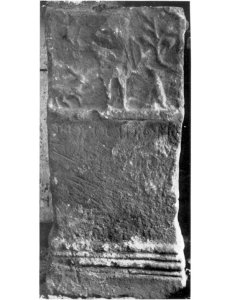
RIB 1207
RIB 1207: Altar for Cocidius from Townfoot Farm (1km NE of Risingham fort) found before 1936 (when it was identified as inscribed). Deo Cocidio et / Sil[vano …] Sev/-[…] IOV / [… a]ram / […] / […] / […] / [v(otum)] s(olvit) l(ibens) m(erito) (‘For the god Cocidius and to Silvanus … [set up] this altar, willingly and deservedly fulfilling his vow. ‘). RIB I p.396
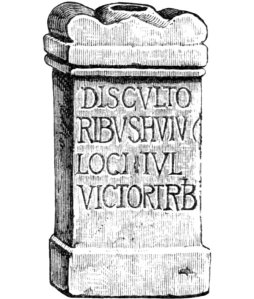
RIB 1208
RIB 1208: Altar for the Dis Cultoribus (gods of this place) found in the bath building at Risingham in 1838. Dis culto/ribus huiu[s] / loci Iul(ius) / Victor trib(unus) (‘To the gods who dwell in this place Julius Victor, the tribune, (set this up)’). RIB I p.397
RIB 1209: Altar for Diana found at Risingham before 1601. Now lost. Deae / Dianae sa/cru(m) Ael(ia) / Timo p(osuit) / v(otum) s(olvens) [l(aeta)] l(ibens) m(erito) (‘For the goddess Diana, Aelia Timo set up this holy offering, gladly, willingly, and deservedly fulfilling a vow’). RIB I p.397
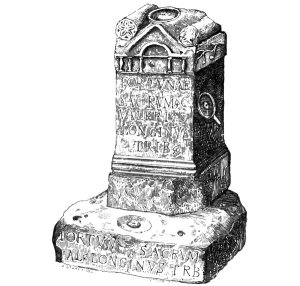
RIB 1210
RIB 1210: Altar for Fortuna found in the bath building in the SE corner of Risingham fort in 1840. Fortunae / sacrum G(aius) / Valerius / Longinus / trib(unus) (altar) [F]ortun[ae] sacrum G(aius) / Val(erius) Longinus trib(unus) (base) (‘Sacred to Fortune: Gaius Valerius Longinus, tribune, (set this up)’). RIB I p.397
RIB 1211: Altar for Fortuna found at Risingham fort before 1717. Now lost. Fortunae / Aug(ustae) / Ael(ia) / Proculina / v(otum) s(olvit) (‘For the Emperor’s Fortune Aelia Proculina fulfilled her vow’). RIB I p.398

RIB 1212
RIB 1212: Altar for Fortuna found in the bath building in the SE corner of Risingham fort in 1840 (probably). Fortunae Reduc[i] / Iulius Severinus / trib(unus) explicito / balineo v(otum) s(olvit) l(ibens) m(erito) (‘For Fortuna of Safe Returns, Julius Severinus, tribune, willingly and deservedly fulfilled his vow, on completion of the baths’). RIB I p.398
RIB 1213: Altar for Hercules found at Risingham fort before 1599. Now lost. [Deo] / Hercu/li Iul(ius) / Paullus / trib(unus) / v(otum) s(olvit) (‘For the god Hercules, the tribune Julius Paullus fulfilled his vow’). RIB I p.398
RIB 1214: Altar for Hercules found at Risingham fort in 1827. Now lost. [D]e[o] / (H)e[r]cul[i G(aius)] / V[al(erius)] Lon/[g]inu[s] / trib(unus) / […] (‘For the god Hercules, the tribune Gaius Valerius Longinus [set this up]’).. RIB I p.399

RIB 1215
RIB 1215: Altar for Hercules found at Risingham fort before 1591. Deo Invicto / Herculi sacr(um) / L(ucius) Aemil(ius) Salvianus / tr[i]b(unus) coh(ortis) I Vangi(onum) / v(otum) s(olvit) l(ibens) m(erito) (‘Sacred to the Invincible God Hercules, Lucius Aemilius Salvianus, tribune of the First Cohort of Vangiones, willingly and deservedly fulfilled his vow’). RIB I, p.399
RIB 1216: Altar for Jupiter found at Risingham fort c.1751. Now lost. I(ovi) O(ptimo) M(aximo) / v[e]xi[l](latio) G(aesatorum) R(aetorum) / q(uorum) c(uram) a(git) / Aemil(ius) Aemilianus / trib(unus) coh(ortis) I Vang(ionum) (‘For Jupiter, Best and Greatest, the detachment of Raetian Spearmen, under the command of Aemilius Aemilianus, tribune of the First Cohort of Vangiones (set this up)’). RIB I, p.400
RIB 1217: Altar for Jupiter found at Risingham fort c.1751. Now lost. [I(ovi) O(ptimo) M(aximo)(?)] / [ve]xi[l](latio) G(aesatorum) R(aetorum) / q(uorum) c(uram) a(git) / Iul(ius) Victor / tr[i]b(unus) coh(ortis) I V/angionum (‘For Jupiter, Best and Greatest, the detachment of Raetian Spearmen, under the command of Julius Victor, tribune of the First Cohort of Vangiones (set this up)’). RIB I, p.400
RIB 1218: Altar for Jupiter found at Risingham fort before 1732. Now lost. I(ovi) O(ptimo) Ṃ(aximo) O / IOVIOM (‘For Jupiter, Best and Greatest …’). RIB I, p.400

RIB 1219
RIB 1219: Altar for Jupiter found in the bath-house at Risingham fort in 1839 or 1840. I(ovi) O(ptimo) M(aximo) D[olicheno pro salute …] / imp(eratorum) C[aes(arum) …] (‘For Jupiter Dolichenus, Best and Greatest, for the welfare … of the Emperor-Caesars …’). RIB I, p.401
RIB 1220: Altar for Jupiter Dolichenus found at Risingham fort before 1702. Now lost. [I(ovi) O(ptimo) M(aximo)] / Dolocheno / G(aius) Iul(ius) Publ(ilius) / Pius trib(unus) / v(otum) s(olvit) l(ibens) m(erito) (‘For [Jupiter Best and Greatest] Dolichenus, Gaius Julius Publilius Pius, tribune, willingly and deservedly fulfilled his vow’). RIB I, p.401
RIB 1221: Altar for Mars Victor found at Risingham fort before 1716. Now lost. Marti / Victori / [I]ul(ius) Publi(lius) / [P]ius trib(unus) / v(otum) s(olvit) l(ibens) m(erito) (‘For Mars Victor, tribune Julius Publilius Pius, willingly and deservedly fulfilled his vow’). RIB I, p.401
RIB 1222: Altar for Mars Victor found at Risingham fort before 1716. Now lost. Marti / Victor[i] / [… ]RRON[…] / Au[r(elio)] EINV / trib(uno) [c(uram)] ag(ente) (‘For Mars Victor … (set this up) under the charge of the tribune Aurelius …’). RIB I, p.402
RIB 1223: Altar for Mars Victor found at Risingham fort in 1842. [ ̣ ̣ ̣] / [ ̣ ̣ ̣ Marti Vi]ctori / [ ̣ ̣ ̣] nius Pr[ ̣] / [ ̣ ̣ ̣] / [ ̣ ̣] trib(un…) libe/rtus ex v(oto) s(olvit) l(ibens) a(nimo) (‘For … Mars Victor … freedman fulfilled it in accordance with a vow with a willing spirit’). RIB I, p.402

RIB 1224
RIB 1224: Altar for the overseas goddesses found at Risingham in 1788. Matribu/s Trama/rinis Iul(ius) / Victor v(otum) s(olvit) l(ibens) m(erito) (‘For the Mother Goddesses from overseas Julius Victor willingly and deservedly fulfilled his vow’). RIB I, p.402

RIB 1225
RIB 1225: Altar for Mogons Cad(…) found in the River Rede just north of Risingham fort before 1599. [D]eo / Mogonito Cad(…) / et N(umini) d(omini) n(ostri) Aug(usti) / M(arcus) G(avius(?)) Secundinus / [b(ene)]f(iciarius) co(n)s(ularis) Habita/nci prima stat(ione) / pro se et suis posu[it] (‘For the god Mogons Cad(…) and to the Divinity of our Lord Augustus, Marcus Gavius Secundinus, beneficiarius of the governor, on his first tour of duty at Habitancum, set this up for himself and his own’). RIB I, p.403
RIB 1226: Altar for Mo(g)ons Cad(…) found in the River Rede just north of Risingham fort before 1599. Now lost. Deo / Mo(g)uno Cad(…) / Inventus do(no) / [ ̣ ̣ ̣] / v(otum) s(olvit) (‘For the god Mogunus Cad(…) (from) Inventus as a gift … fulfilled his vow’). RIB I, p.403

RIB 1227
RIB 1227: Dedication slab found at Risingham fort before 1599. Numinib(us) / [Augustor(um)] coh(ors) IIII Gal(lorum) / eq(uitata) / fec(it) (‘For the Divinities of the Emperors, the Fourth Cohort of Gauls, part-mounted, set this up’). RIB I, p.404

RIB 1228
RIB 1228: Altar for the nymphs found in 1825 near a spring on the east side of Dere Street. Somnio prae/monitus / miles hanc / ponere ius/ sit / aram quae / Fabio nup/ta est Nym/phis vene/randis (‘Forewarned by a dream, a soldier bade she who is married to Fabius to set up this altar to the Nymphs who are to be worshipped’). RIB I, p.404

RIB 1229
RIB 1229: Fragmentary inscription found at Risingham before 1857. […] / pro salute / Arr(unti) Paulini / Theodotus / lib(ertus) (‘… for the welfare of Arruntius Paulinus, Theodotus, his freedman, (set this up)’). RIB I, p.404
RIB 1230: Altar for an unknown deity found at Risingham before 1875. […] RAN […] / […]I[…]I[…]L[…]/[…]/[…]/[… coh(ortis)] / I Van[g(ionum)] s(olvit) (‘… of the First Cohort of Vangiones fulfilled (his vow)’). RIB I, p.405
RIB 1231: Altar for an unknown deity found at Risingham before 1599. Now lost. [ ̣ ̣ ̣ coh(ors)] I Va[ng(ionum)] / [e]q(uitata) mil(liaria) cu/i praeest M(arcus) / Peregrinius / Super trib(unus) (‘… the First Cohort of Vangiones, part-mounted, one thousand strong, (set this up) under the command of the tribune Marcus Peregrinius Super’). RIB I, p.405
RIB 1232: Fragment of an altar probably found at Risingham in 1849. […] / esi […] / v(otum) s(olvit) l(ibens) m(erito) (‘… willingly and deservedly fulfilled the vow’). RIB I, p.406
RIB 1233: Fragment of an altar found at Risingham before 1760. Now lost. O DANA … II … (?). RIB I, p.406

RIB 1234
RIB 1234: Dedication slab found at the S gate of Risingham fort in 1844. [Imp(eratoribus) Caes(aribus) L(ucio)] / [Sept(imio) Severo Pio Pertin]/[aci Arab(ico) Adi]ab(enico) Part(h)[i]co Maxi(mo) / co(n)s(uli) III et M(arco) Aurel(io) Antonino Pio / co(n)s(uli) II Aug(ustis) ⟦et P(ublio) Sept(imio) Getae nob(ilissimo) Caes(ari)⟧ / portam cum muris vetustate di/lapsis iussu Alfeni Senecionis v(iri) c(larissimi) / co(n)s(ularis) curante Oclatinio Advento proc(uratore) / Aug(ustorum) n(ostrorum) coh(ors) I Vangion(um) (milliaria) eq(uitata) / cum Aem[i]l(io) Salviano trib(uno) / suo a solo restit(uit) (‘For the Emperor Caesars Lucius Septimius Severus Pius Pertinax, conqueror of Arabia, conqueror of Adiabene, Greatest Conqueror of Parthia, thrice consul, Augustus, and Marcus Aurelius Antoninus Pius, twice consul, Augustus, and for Publius Septimius Geta, most noble Caesar, the First Cohort of Vangiones, one thousand strong, part-mounted, restored from ground-level this gate and walls, which had collapsed through age, at the command of Alfenus Senecio, of senatorial rank and consular governor, under the charge of Oclatinius Adventus, procurator of our Emperors, together with their tribune Aemilius Salvianus’). RIB I, p.406

RIB 1235
RIB 1235: Dedication slab mostly found in the HQ of Risingham fort in 1849. [Imp(eratori) Caes(ari) di]vi Sept(imi) [Severi Pii Arabici Adi]abenic[i Parthici Maxi]mi Bri[tannici Maxi]mi filio di[vi Antonini Pii] / [Germanici] Sarmati[ci nepoti divi Anton]ini Pii pro[nepoti divi H]adriani a[bnep(oti) divi Traian]i Partichi et [divi Nervae adnep(oti)] / [M(arco) Aurelio] Anton[ino Pio Fel(ici) Aug(usto) Parth]ico Maxim[o Britannico Maximo Germanico Maximo] trib(unicia) potesta[te XVI imperatori II] / [patri pat]ri(a)e proconsuli pro [pietate ac dev]otione com[muni e]t Iu[liae Domnae Piae Fel(ici) Aug(ustae) Ma]tri August[i nostri item] / [castroru]m senatus {h}ac patri(a)e pro [pi]etate {h}ac d[evoti]one [communi curante ⟦[…]⟧ leg(ato)] Aug(ustorum) [pr(o) pr(aetore)] / [coh(ors) I Van]gionum item Raeti Gae[sa]ti et Expl[oratores Habitancenses] posuerun[t d(evoti) n(umini) m(aiestati) q(ue) eorum] (‘For the Emperor Caesar, son of the deified Septimius Severus Pius, conqueror of Arabia, conqueror of Adiabene, Greatest Conqueror of Parthia, Greatest Conqueror of Britain, grandson of the deified Antoninus Pius, conqueror of Germany, conqueror of Sarmatia, great-grandson of the deified Antoninus Pius, great-great-grandson of the deified Hadrian, great-great-great-grandson of the deified Trajan, conqueror of Parthia, and of the deified Nerva, Marcus Aurelius Antoninus Pius Felix Augustus, Greatest Conqueror of Parthia, Greatest Conqueror of Britain, Greatest Conqueror of Germany, in his sixteenth year of tribunician power, twice acclaimed Imperator, father of his country, proconsul, out of their joint duty and devotion, and for Julia Domna Pia Felix Augusta, mother of our Emperor, similarly of the army, Senate and country, out of their joint duty and devotion, under the charge of …, imperial propraetorian legate, the First Cohort of Vangiones, likewise the Raetian Spearmen and the Scouts of Habitancum, devoted to their divinity and majesty, set this up’). RIB I, p.407

RIB 1236
RIB 1236: Dedication slab found in the bath building in the SE corner of Risingham fort in 1840. Imp(erator) Caes(ar) M(arcus) [Aurelius] / Antoninus P[ius Fel(ix) Aug(ustus)] / Adiabenicu[s Parthicus] / M[a]xi[mus ̣ ̣ ̣] (‘The Emperor Caesar Marcus Aurelius Antoninus Pius Felix Augustus, conqueror of Adiabene, Most Great Conqueror of Parthia … ‘). RIB I, p.408

RIB 1237
RIB 1237: Altar found at Risingham before 1599. […] / [imp(eratoris) Caes(aris) M(arci)] / Aur(eli) Anton[i]/ni Pii Aug(usti) M(arcus) / Messorius / Diligens tri/bunus sacrum (‘… for the Emperor Caesar Marcus Aurelius Antoninus Pius Augustus, the tribune Marcus Messorius Diligens (set up) this sacred offering. RIB I, p.408
RIB 1238: Dedication found at Risingham before 1716. [… tr]ib(unicia) potest(ate) […] / [… in]dulgen[ti]s[simo …] / [… dili]gentiss[i]m[o …] / […] CM OOMLTV […] / [… p]r[i]nc[i]pi ob re[fect…] / […] TADCEXXATES […] / VCINMOCA […] / […] VAC trib(unus) devot[i]s[si]m[u]s [… ̣] (‘… with tribunician power … because of the re(building?) … tribune … ‘). RIB I, p.409
RIB 1239: Building stone of legio VI Victrix found at Risingham near the site of the internal bath-building in 1844. Now lost. leg(io) VI | Vic(trix) | P(ia) F(idelis) f(ecit) (‘The Sixth Legion Pia Fidelis built (this)’). RIB I, p.409

RIB 1240
RIB 1240: Building stone of a cohors Nerviorum built into a wall near Risingham fort found in 1872. Now lost. vexil(latio) [coh(ortis) … ] / Nerv[ior(um)] / fec[it] (‘A detachment (of the … Cohort) of Nervians built (this)’). RIB I, p.409

RIB 1241
RIB 1241: Building stone of the cohors I Vangionum found before 1601 at Risingham. coh(ors) I Vang(ionum) / fecit curante / Iul(io) Paullo trib(uno) (‘The First Cohort of Vangiones made (this) under the command of the tribune Julius Paullus’). RIB I, p.409
RIB 1242: Dedication slab found at Risingham before 1601. Now lost. [ ̣ ̣ ̣]ICOS cui pr(a)e[est …] / […] Ṃ(arcus) Aurel(ius) Cast[us …] / […] vetustate conlabs[…] (‘… under the command of … Marcus Aurelius Castus … collapsed through age …’). RIB I, p.409
RIB 1243: Dedication slab found in draining between West Woodburn and Risingham before 1827. […] / [pe]r coh(ortem) [I Vang(ionum)] / [et n]ume[rum] / [E]xplor[ator(um)] / [a] sol(o) re[stit(uit)] (‘… through the agency of the First Cohort of Vangiones and the Unit of Scouts restored (this) from ground-level’). RIB I, p.410
RIB 1244: Dedication slab found at Risingham before 1832. Now lost. […] OI […] / […]EO[…] / […] co[h(ors) … ] / […] et n[umerus …] / […] et Ex[ploratores] (‘… Cohort … and Unit … and Scouts …’). RIB I, p.410
RIB 1245: Fragmentary inscription found at Risingham before 1925. [… f]eci[t …] (‘… made …’). RIB I, p.410

RIB 1246
RIB 1246: Tombstone of 10-year-old Aemilianus found at Chesterhope, near Risingham, before 1777. D(is) M(anibus) / Aemilianus / annorum / X (‘To the spirits of the departed: Aemilianus, aged 10’). RIB I, p.410

RIB 1247
RIB 1247: Tombstone of a standard-bearer found built into the fort-wall at Risingham in 1842. […] / Iul(ius) Victor / sig(nifer) vix(it) an(nos) / LV (‘… Julius Victor, standard-bearer, lived 55 years’). RIB I, p.411

RIB 1248
RIB 1248: Tombstone found built into the north-east angle of the fort-wall at Risingham in 1842. D(is) M(anibus) / Satrius / Honoratus / vixit an/nis V me/(n)sibus VIII (‘To the spirits of the departed: Satrius Honoratus lived 5 years, 8 months’). RIB I, p.411

RIB 1249
RIB 1249: Tombstone probably found at Risingham before 1869. […] / mil(es) coh(ortis) IIII Gal(lorum) / sti(pendiorum) XIIII def(unctus) / [vix]sit an(n)is / XXXXIIII (‘… soldier of the Fourth Cohort of Gauls, of 14 years’ service at death, he lived 44 years’). RIB I, p.411

RIB 1250
RIB 1250: Tombstone found built into the fort-wall of Risingham, 6.1m S of the NE angle in 1842. D(is) M(anibus) s(acrum) / Aur(eliae) Lupu/l(a)e matri / piissim(a)e / Dionysius / Fortuna|tus filius / s(it) t(ibi) / t(erra) l(evis) (‘Sacred to the spirits of the departed (and) to his very devoted mother Aurelia Lupula Dionysius Fortunatus, her son, (set this up); may the earth rest lightly on you’). RIB I, p.411

RIB 1251
RIB 1251: Tombstone of Aurelia Quartilla found built into the fort-wall of Risingham, 6.1m S of the NE angle in 1842. D(is) M(anibus) s(acrum) / Aur(elia) Quartil/la vix(it) an/nis XIII m(ensibus) I V / d(iebus) XXII Aur(elius) / Quartinus / posuit fili|ae suae (‘Sacred to the spirits of the departed, Aurelia Quartilla, lived 13 years, 4 (?) months, 22 days, Aurelius Quartinus set this up to his own daughter’). RIB I, p.412
RIB 1252: Tombstone of Iuliona found at Chesterhope, 1.6km SE of Risingham before 1777. Now lost. D(is) [M(anibus)] / Iuliona […]/ni filia vixit / ann[o]s XVI m(enses) XI / di[es] XIIII (‘To the spirits of the departed: Juliona, daughter of …, lived 16 years, 11 months, 14 days’). RIB I, p.412

RIB 1253
RIB 1253: Tombstone with a fragmentary epitaph in verse found at Townfoot Farm, 300m E of All Saints Church, East Woodburn, and over 1.2km NE of Risingham fort in 1826. [… Flam]inii […]nsae / […]ae dominar|[is … se]mper geli/[dis …]te pruini[s] / [ ̣ ̣ ̣] qui sib[i] / […] IIIΛS / […] FICTNI[…] / […]ue frag[…] / […] tibi pro / […] RCE pro / […] Flaminius O / […]e profund[…] / [… l]ucem volv/[it …]dere vitae (‘?’). RIB I, p.412

RIB 1254
RIB 1254: Tombstone to an unnamed daughter, 1 year and 21 days old, found at Risingham before 1601. D(is) M(anibus) / Blescius / Diovicus / filiae / suae / vixsit / an(n)um / I et die(s) XXI (‘To the spirits of the departed; Blescius Diovicus (set this up) to his own daughter; she lived one year and 21 days’). RIB I, p.413

RIB 1255
RIB 1255: Tombstone found at Risingham in 1842 dated to May AD 278. […]s decep[tus] / […] ann(orum) XXII / [a(nte) d(iem) …] Kal(endas) Iun(ias) […] / [inte]re[v]it im[p(eratore)] / [Prob]o it(erum) co(n)s(ule) / [h(eres)] f(aciendum) c(uravit) / [A]ure[l]ius Vict[or] / avunculu[s] (‘… entrapped … at the age of 22; on May … he died when the Emperor Probus was consul for the second time; his uncle Aurelius Victor as heir had this erected’). RIB I, p.413

RIB 1256
RIB 1256: Tombstone found at Risingham in 1877. […]vius / […]rulus dul/[cissimus pare]ntibus suis / [ille cum per val]etudinem sit / [impeditus nat(urae)] ord(ine) filio / [heres est] substit(ut)us (‘…]rulus, most sweet to his parents, the other, when he had been prevented by ill-health, was substituted [as heir] instead of the son, following the natural succession’). RIB I, p.414
RIB 1257: Tombstone seen in 1911 in the garden of Elsdon Rectory. Now lost. Dis Ma[ni]/bus / C[…]la[…]us / vix(it) […] / […] (‘To the spirits of the departed … lived …’). RIB I, p.414
RIB 1258: Tombstone of the daughter of Co[…]eranus found before 1910 in the east gable of the Yellow House, 400m NE of West Woodburn bridge. […] / filia Co[…]/erani vi[x(it)] / anno[s] XVII[I] / s(it) t(ibi) t(erra) [l(evis)] (‘… daughter of Co[…]eranus, she lived 18 years, may the earth lie lightly on you’). RIB I, p.415
RIB 1259: Fragmentary tombstone found at Risingham before 1732. Now lost. D(is) M(anibus) / […]uxiani / […] Mufo / […]t (‘To the spirits of the departed … Mufo …’). RIB I, p.415
RIB 1260: Tombstone fragment found at Risingham in 1842. [D(is)] M(anibus) / […] (‘To the spirits of the departed …’). RIB I, p.415
RIB 1261: Tombstone fragment found at Risingham before 1732. [D(is) M(anibus)] s(acrum) / […]RIN[…] / […]ATER[…] / […]VIT (‘Sacred to the spirits of the departed …’). RIB I, p.415
Analysis
Whilst the ‘edge of empire’ cliche is relentlessly over-used of Hadrian’s Wall itself, it is much closer to the truth in the outpost forts, as the composition of the garrisons based there confirms. Cohorts of mixed infantry and cavalry, expanded from the quingenary IIII Gallorum in the Antonine period to the milliary I Vangonum in the 3rd century, together with scouts and Raetian frontier specialists, hint at the intelligence-gathering role of these forts. What is perhaps surprising is that families still accompanied the troops on these out-of-the-way postings, as the tombstones listed attest. Whether this denotes a certain recklessness on the part of the troops, or (more likely, one might venture) an indication that conditions out here were settled and of no great concern, is uncertain.


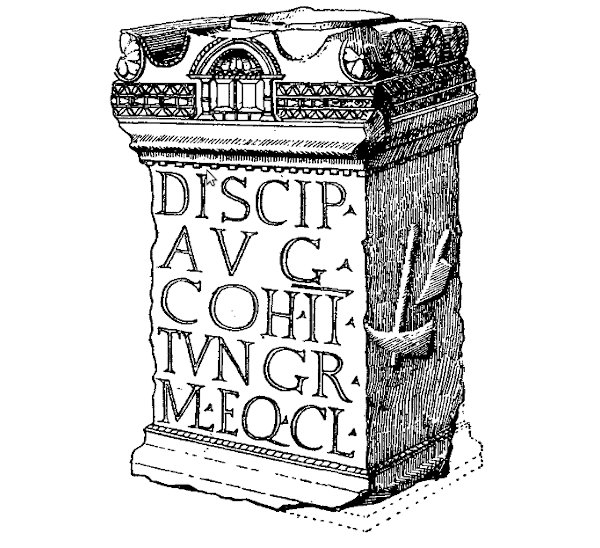
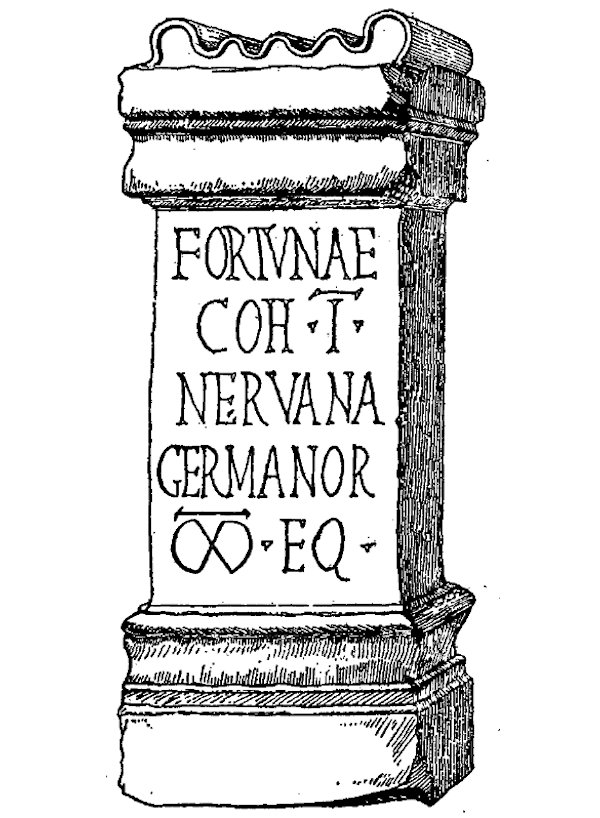
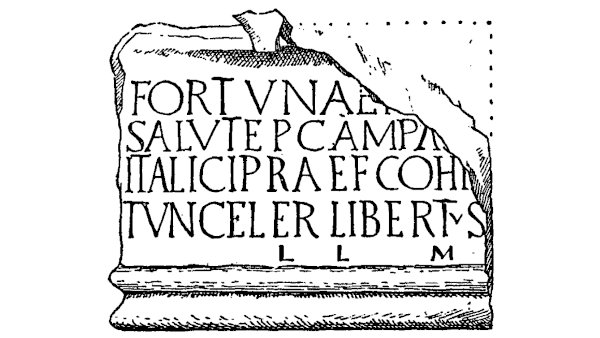
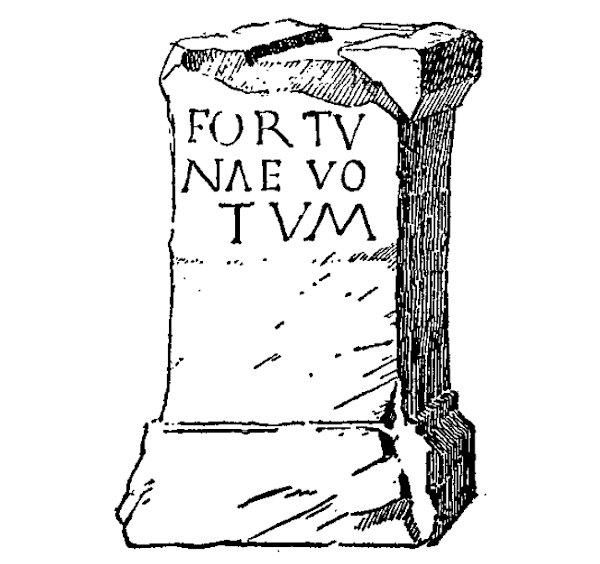
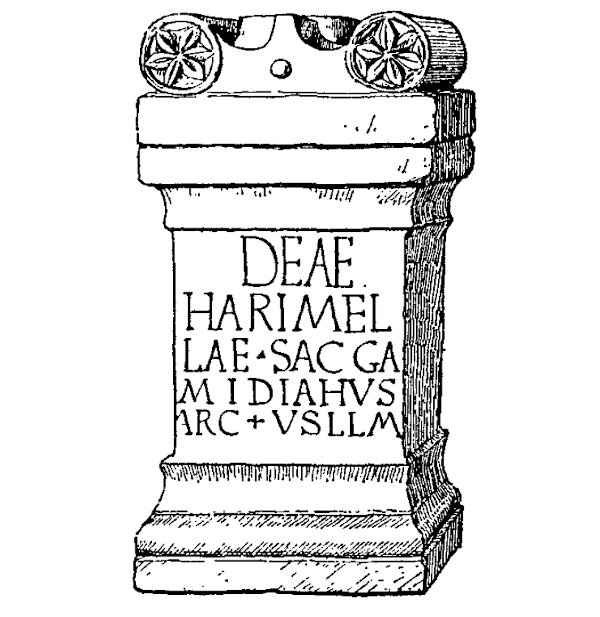

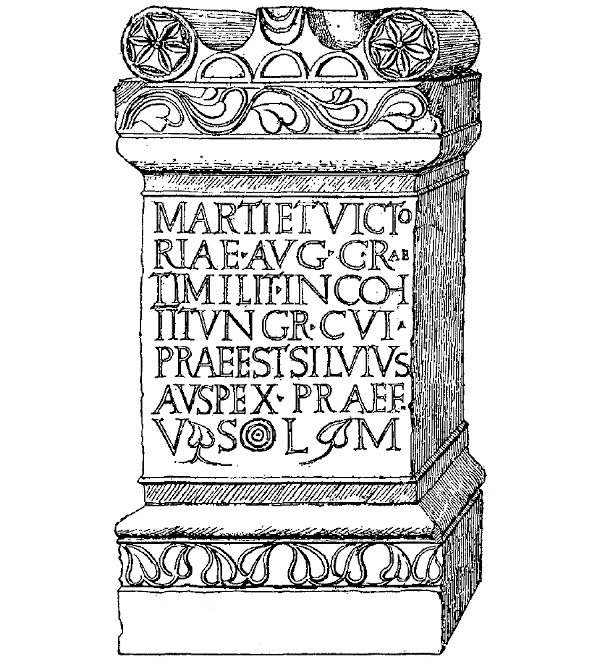

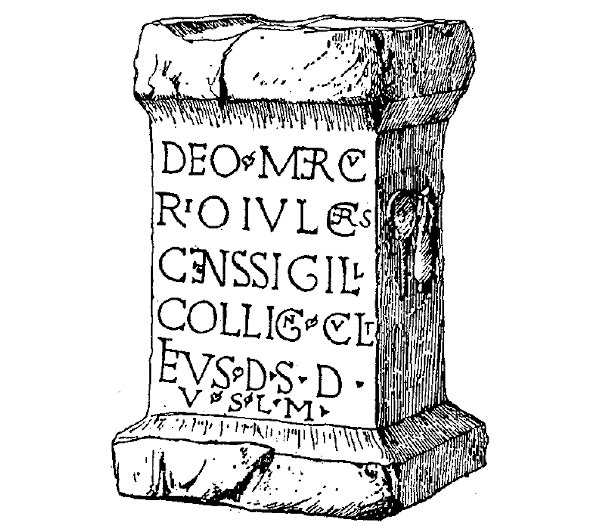
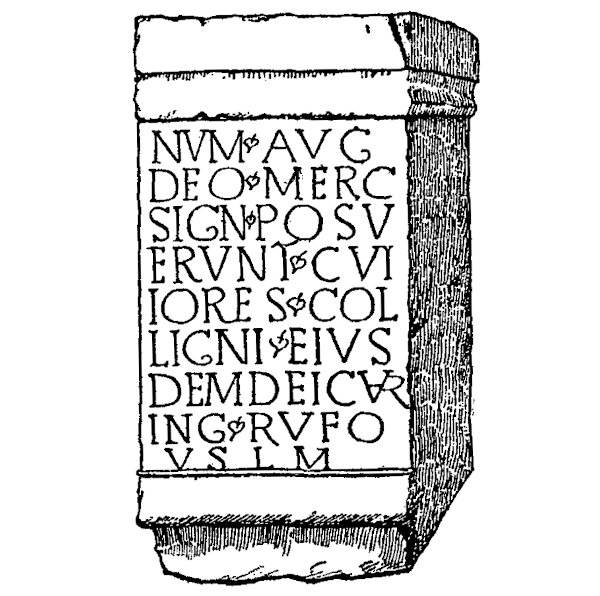
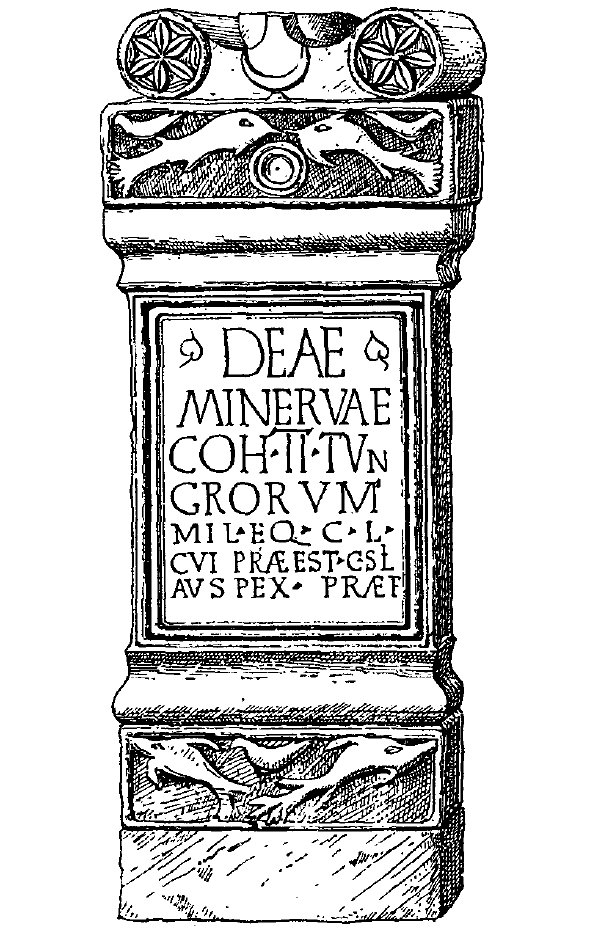
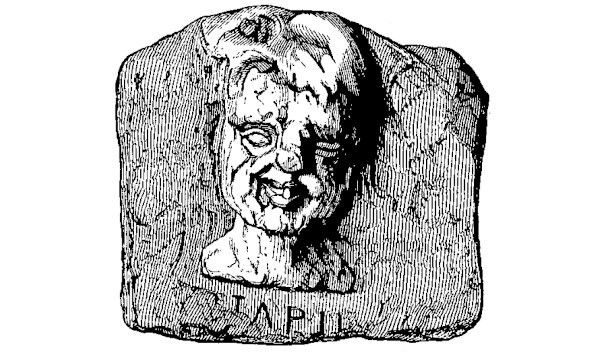
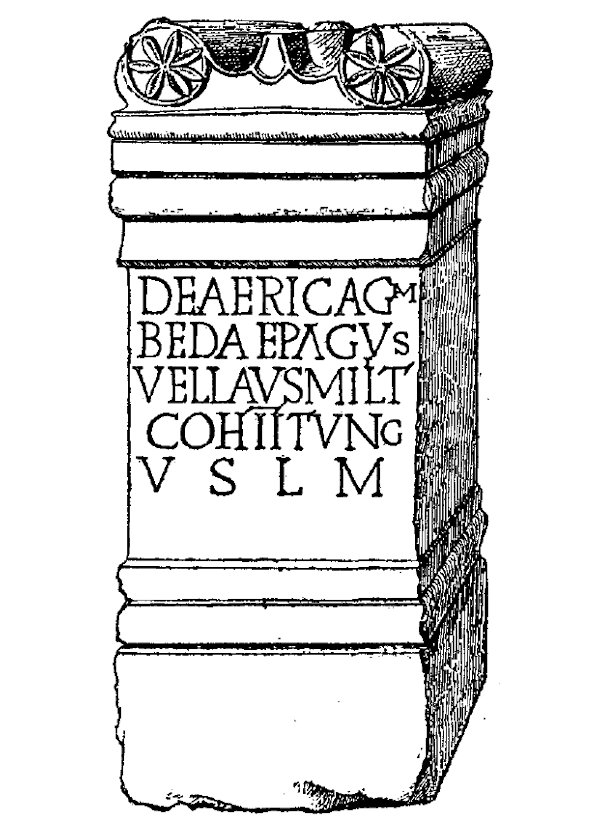
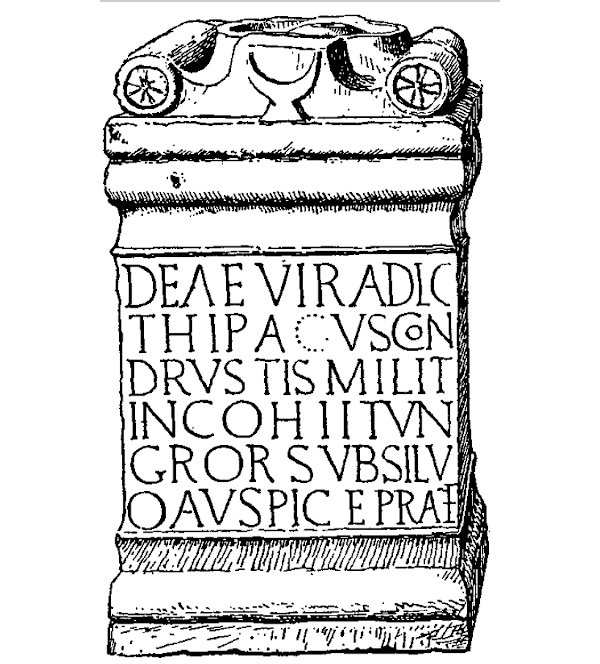
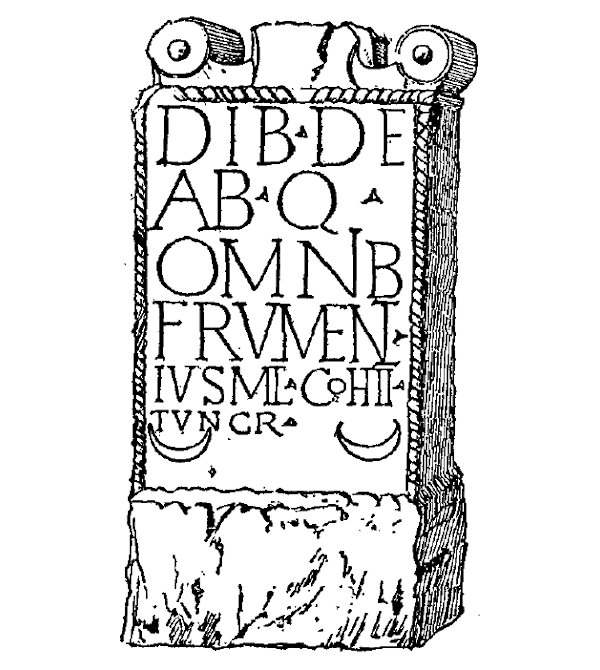

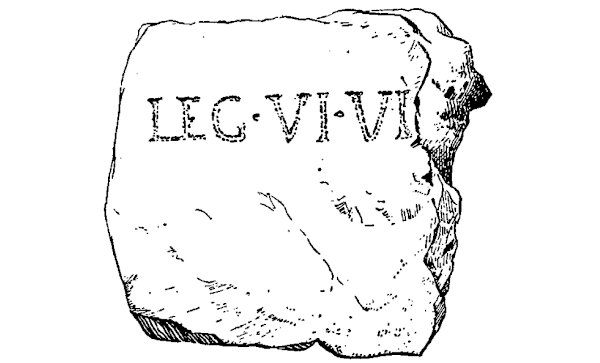

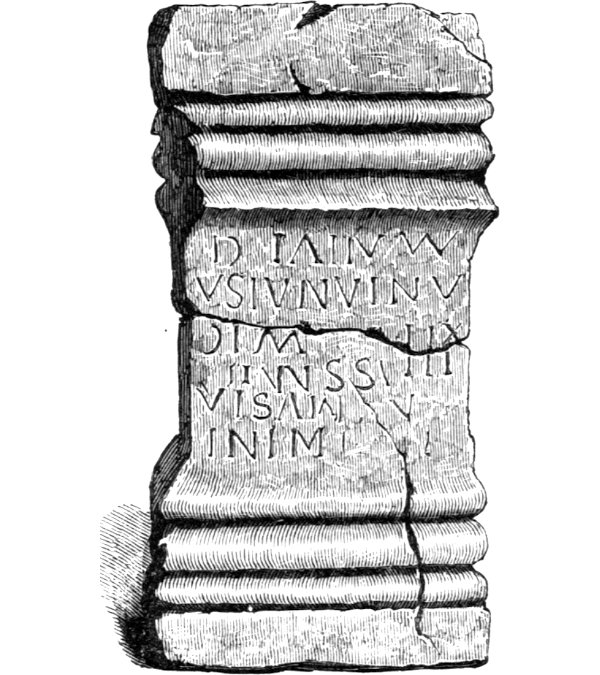
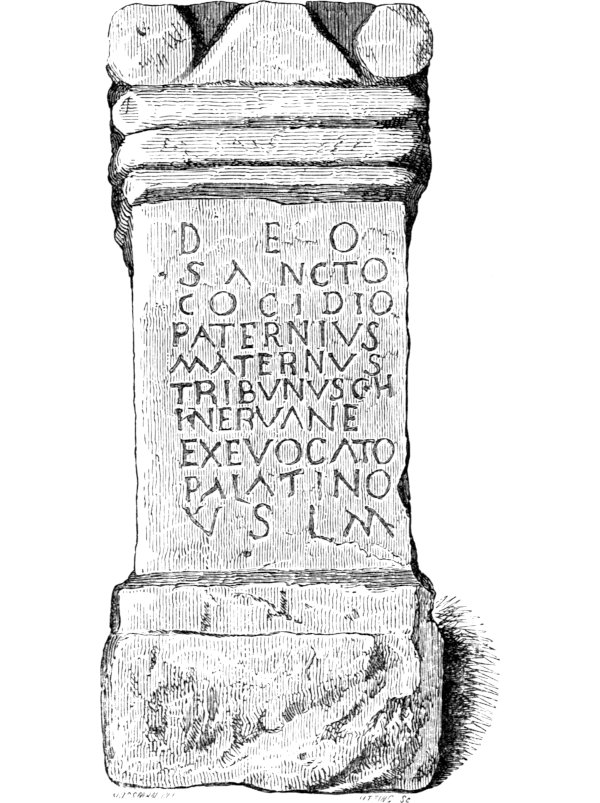

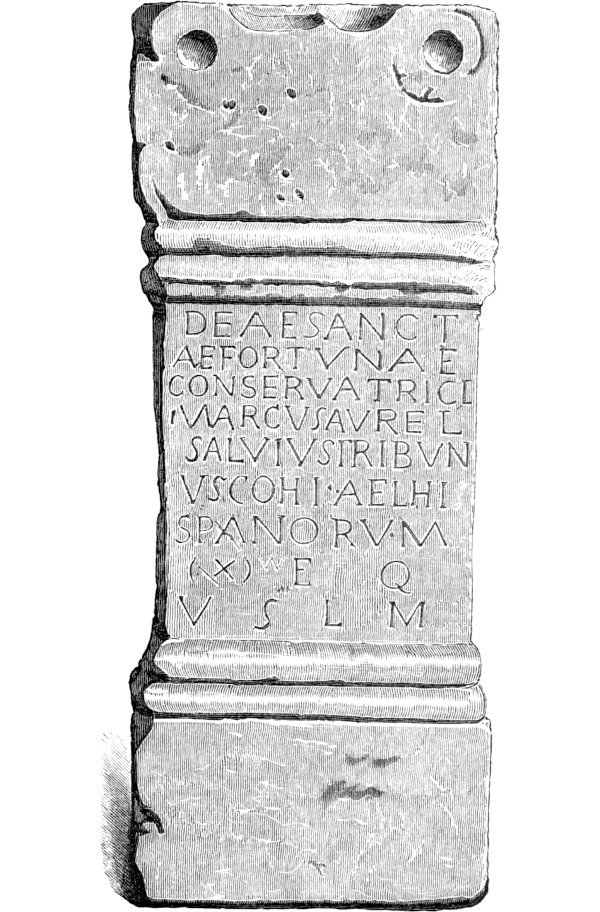
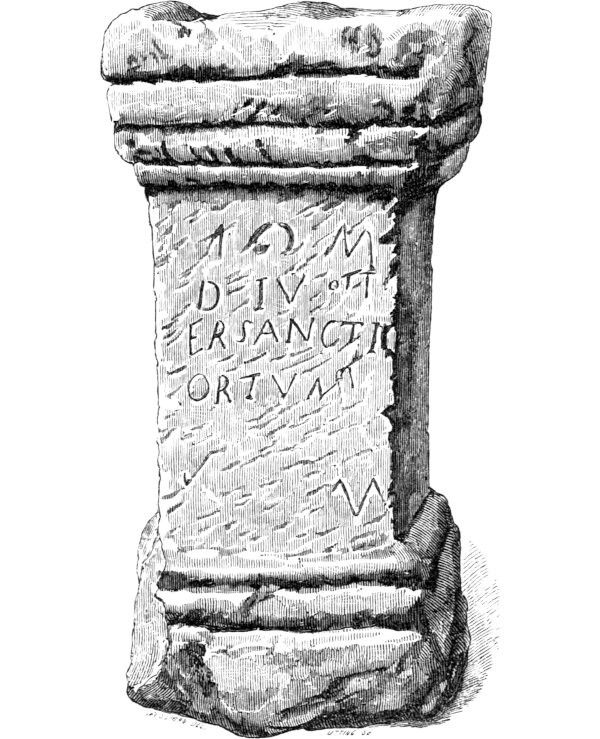

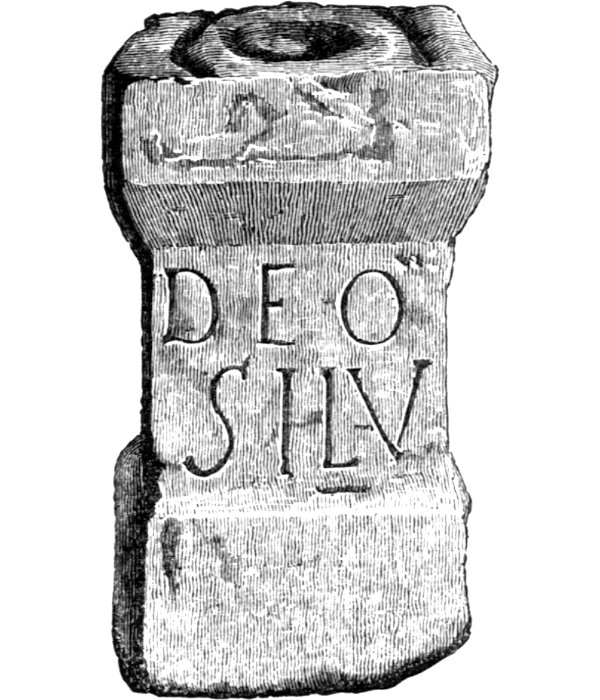
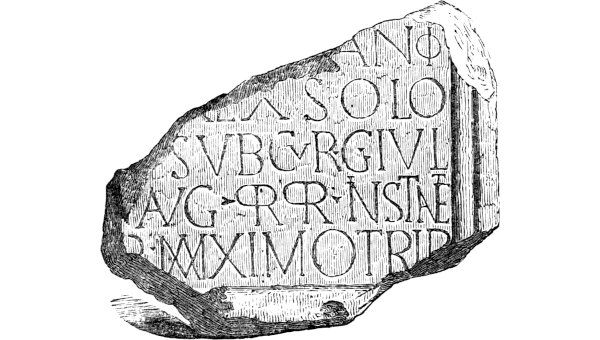
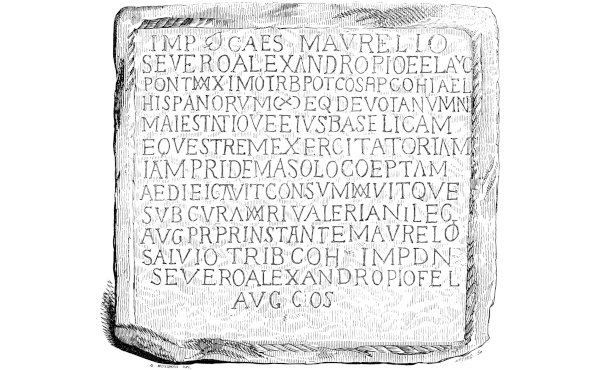

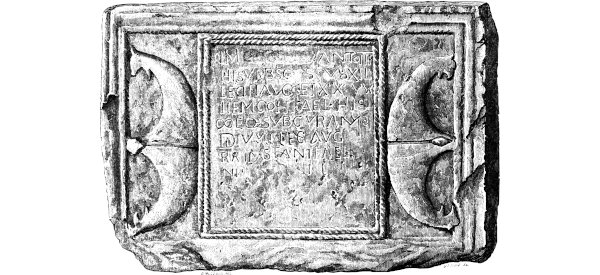

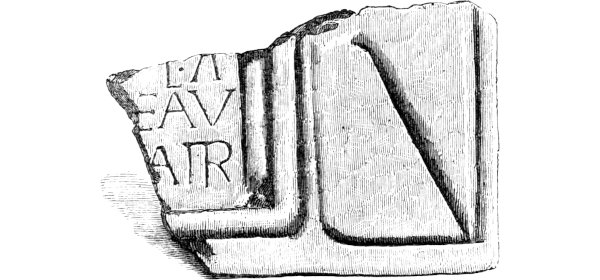

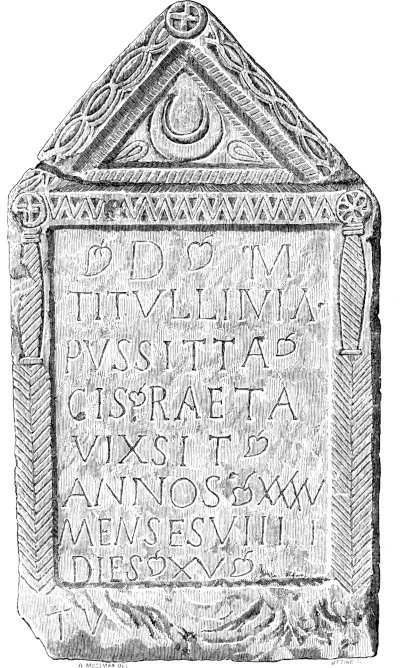
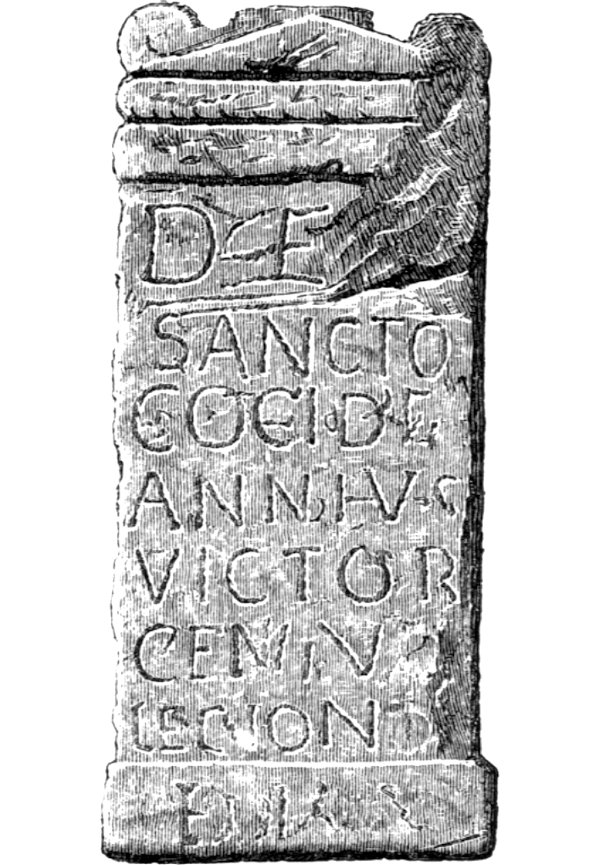
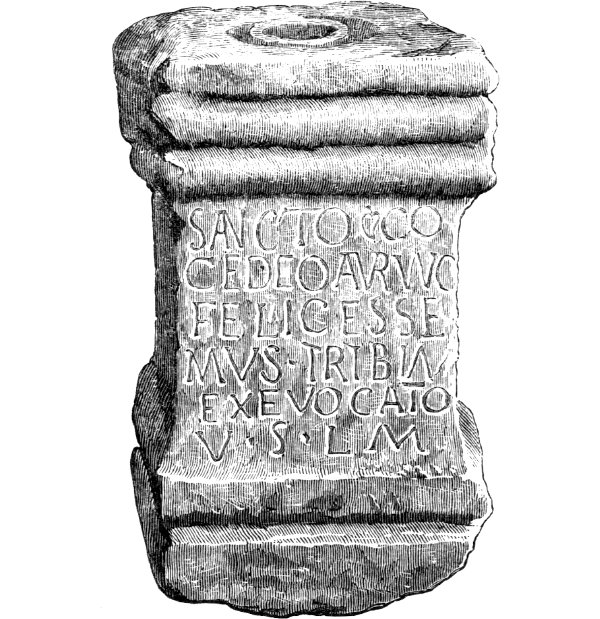

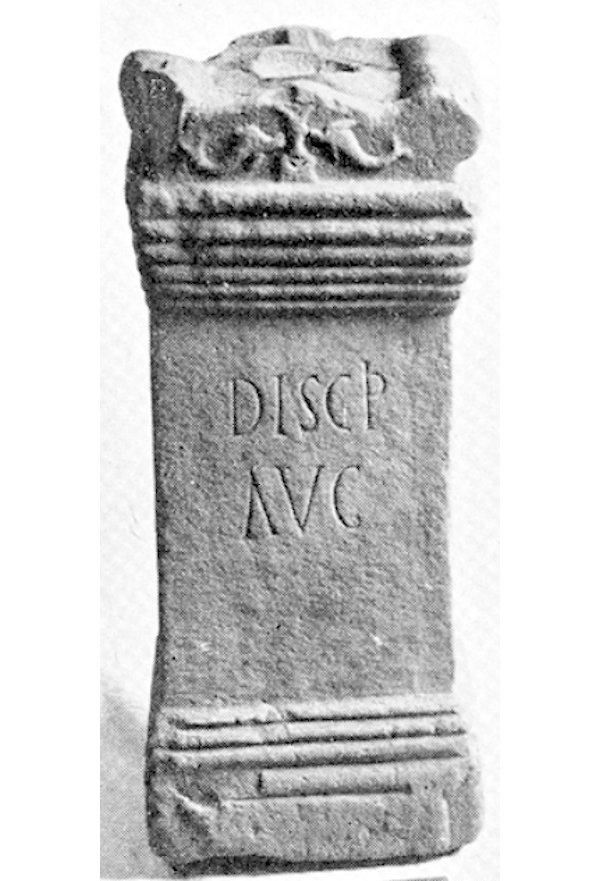

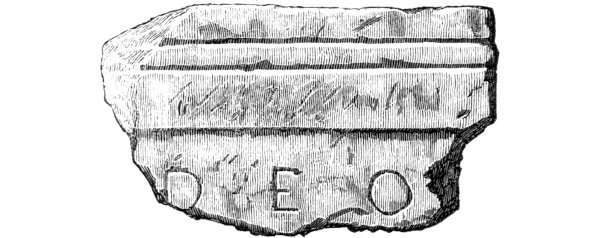



























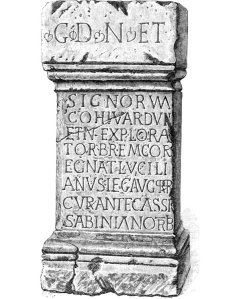
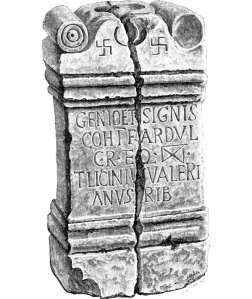
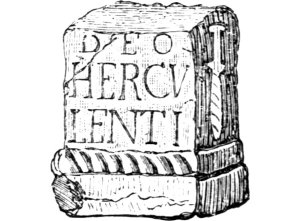
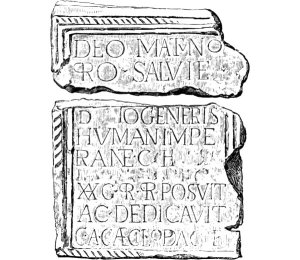
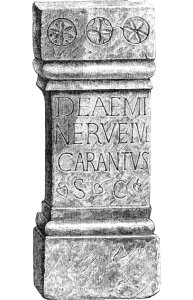
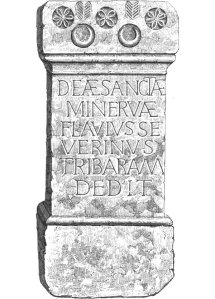
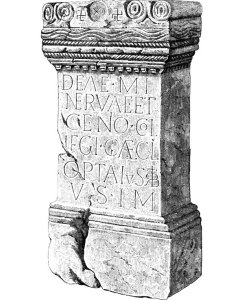
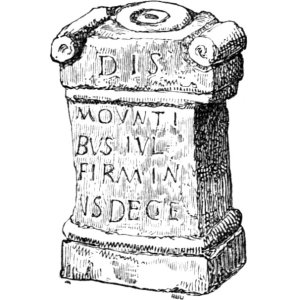
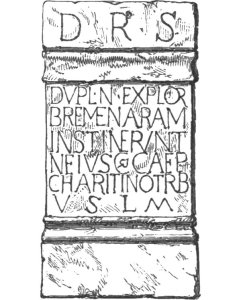
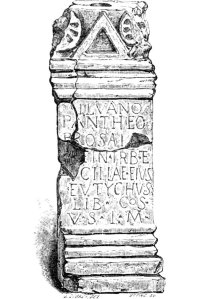

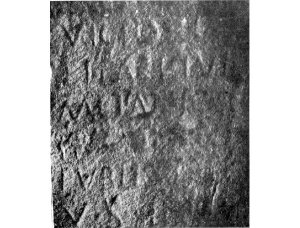



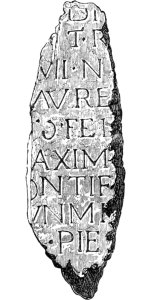









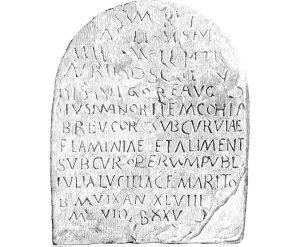
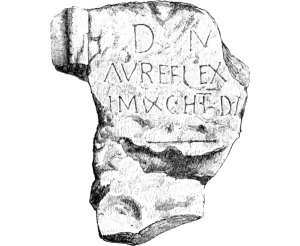
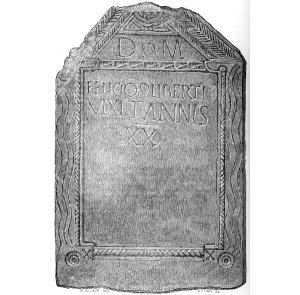
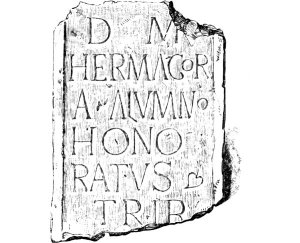
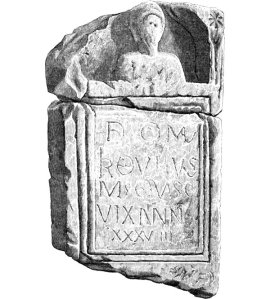
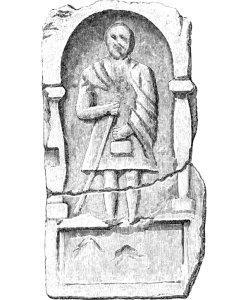












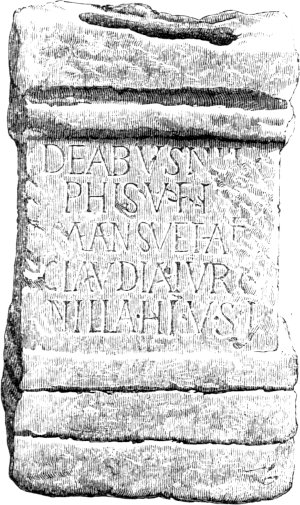
































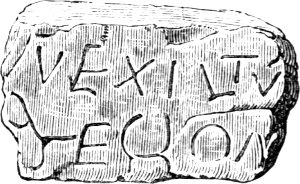







You must be logged in to post a comment.